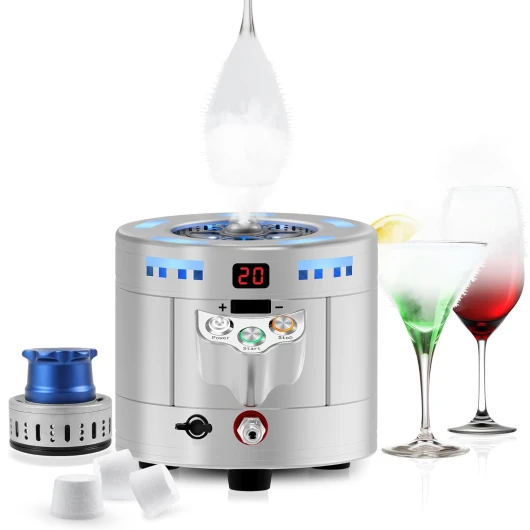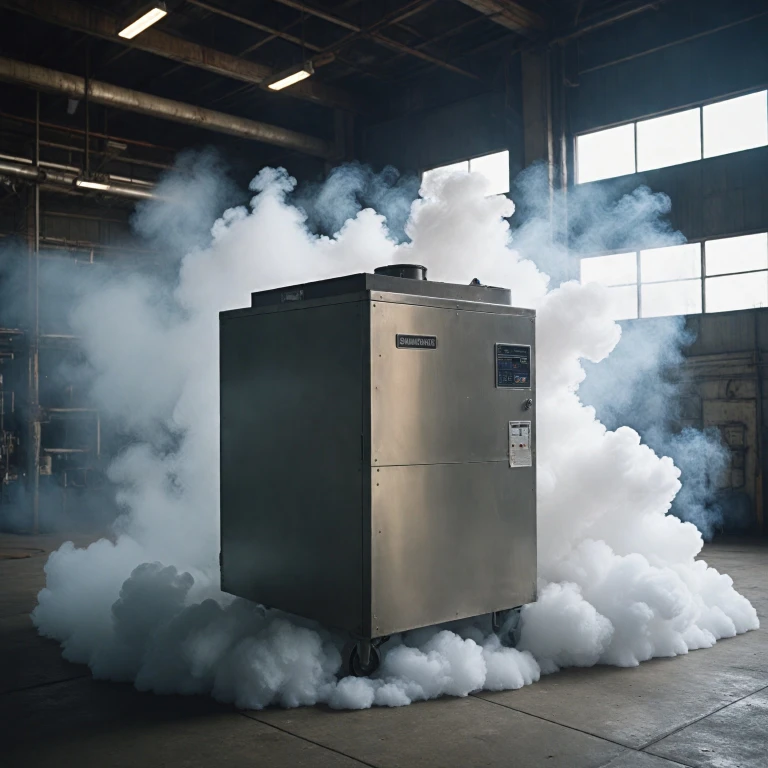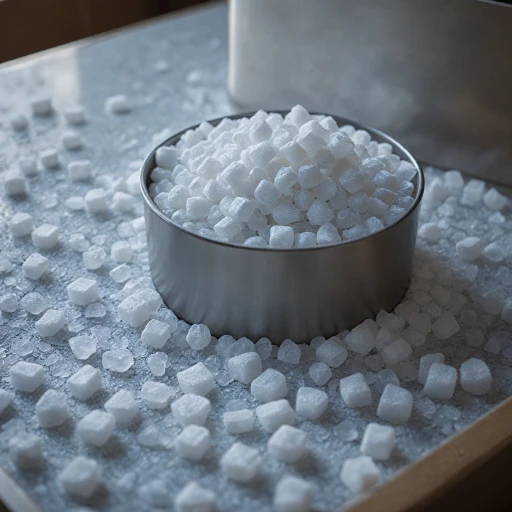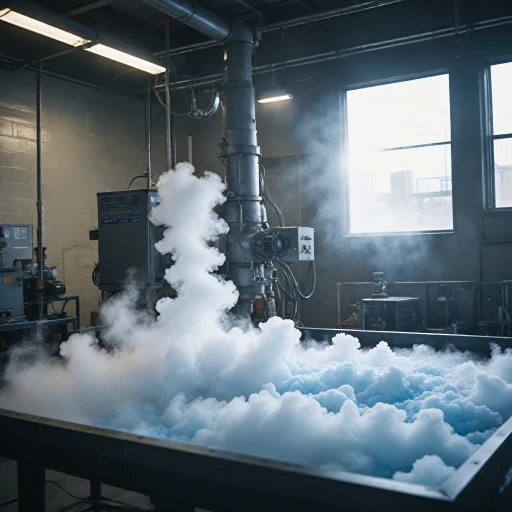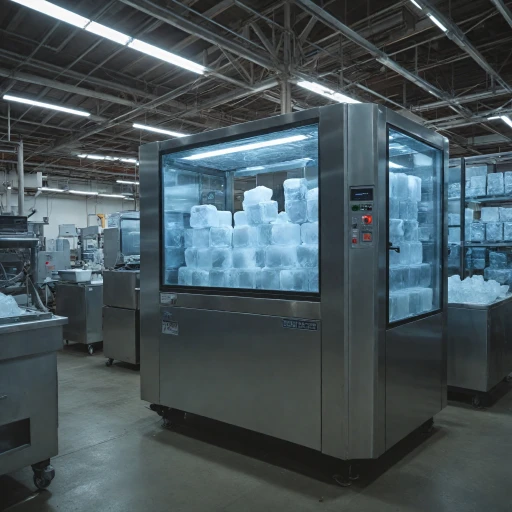
Understanding Dry Ice Machines
Exploring the Technology Behind Dry Ice Machines
Dry ice machines represent a fascinating advancement in ice production technology, enabling the creation of dry ice in various forms. These machines are available in multiple types, each catering to distinct industry needs, ranging from cleaning to preservation. Understanding how these machines work can help businesses make informed decisions about implementing them into their operations.
Unlike traditional ice makers that produce water-based ice, dry ice machines utilize liquid CO2 to generate solid carbon dioxide in the form of pellets or blocks. This process occurs through a series of carefully controlled stages, including the compression of CO2 into liquid form, followed by rapid depressurization to create solid CO2. The resulting dry ice can be customized into specific sizes and shapes, offering flexibility in application.
When it comes to selecting a dry ice machine, factors such as production capacity and size become crucial. Whether your business requires small portable dry ice makers for on-the-go operations or a large-scale dry ice machine for industrial use, there's a variety of models to match your needs. Companies like ASCO provide advanced machines that support efficient dry ice production and are equipped with free shipping options, ensuring you receive the equipment you need without additional costs.
Businesses across various sectors benefit from using dry ice machines, including healthcare, food services, and cleaning industries where technologies like ice blasting and ice cleaning redefine efficiency standards. These machines are not only advantageous for increasing productivity but are also an investment in the quality and safety of operations. Discover how enhance your experience with a reliable ice machine can transform your approach to ice handling.
Advantages of Using Dry Ice Machines
Why Dry Ice Machines Stand Out
Dry ice machines, like the ASCO dry ice production machines, offer a range of benefits that make them an attractive option for businesses and industries. The ability to produce dry ice in various forms, such as blocks, pellets, and cylinders, makes these machines versatile and efficient for different applications.- Low Temperature Advantage: Dry ice remains at a consistently low temperature, making it suitable for cooling and cleaning processes.
- Non-Melting Properties: Unlike regular ice, dry ice sublimates, meaning it transforms directly from a solid to a gas without melting. This characteristic helps in avoiding any liquid residue during use.
- Efficient Ice Blasting: When used in ice blasting applications, dry ice effectively cleans surfaces without damaging them, a crucial point for sensitive equipment maintenance.
- Portability: Portable dry ice machines allow for on-site ice production, making it convenient for scenarios that require immediate dry ice availability.
- Free Shipping and Competitive Prices: The availability of free shipping and competitive pricing on these machines, including offerings from companies like ASCO, makes investing in an ice maker or ice blaster a cost-effective decision.
Common Applications for Dry Ice
Industries Harnessing the Power of Dry Ice
The unique properties of dry ice have made it an invaluable resource across various industries. Its versatility and efficiency have enabled businesses to optimize their processes, ensuring quality and precision. Below are some of the most common applications where dry ice is utilized, showcasing its broad potential.
- Cleaning and Maintenance: Dry ice blasting is an eco-friendly cleaning method that effectively removes contaminants without damaging surfaces. It's widely used in industrial settings for equipment maintenance and cleaning. The process involves using an ice blaster to shoot dry ice pellets at high speeds, tackling anything from grease build-up to residue removal.
- Food and Beverage Industry: In the food sector, dry ice is used to keep perishables at the right temperature during shipping and in-store displays. Its nonflammable and non-toxic properties ensure that products remain fresh without contamination risks. The use of commercial ice cooler machines enhances storage capabilities with the added benefit of maintaining quality.
- Transportation and Storage: Dry ice is indispensable in the transport sector for shipping temperature-sensitive goods over long distances, especially in the healthcare industry. Being available in forms like ice blocks and pellets, it offers flexibility in packaging solutions, optimizing space and cost-effectiveness.
- Manufacturing and Production: In the manufacturing field, dry ice is used for flash-freezing products and as a cooling agent, aiding in production efficiency. This application extends to various scales, from small ice maker units to larger production machines tailored to specific industry needs.
These applications highlight just a slice of how diverse the uses of dry ice can be. Whether for blasting, cooling, or preservation, it continues to prove itself as a critical component across sectors. As dry ice machines continue to evolve and innovate, their integration into new areas may soon follow, driving industry advancements further.
Choosing the Right Dry Ice Machine
Key Considerations for Selecting Your Ideal Dry Ice Maker
Choosing the right dry ice machine is crucial for both efficiency and cost-effectiveness. When evaluating your options, take into account several factors to ensure you make a well-informed decision.- Ice Production Capacity: Determine the daily ice production needs. Machines vary widely in their production capabilities, from small portable dry ice makers to large-scale production machines. Assess the required ice lbs and choose accordingly.
- Machine Type: Decide between ice blocks, pellets, or cylinders. Each form has its applications—blocks may suit blasting and cleaning, while pellets work well for energy-efficient cooling processes.
- Energy Efficiency: Consider machines that offer low energy consumption without compromising performance. Energy-efficient models not only save on utility bills but also contribute to a more sustainable operation.
- Operational Environment: Factor in the machine's intended use, whether it's for industrial ice blasting, ice cleaning, or regular production. Portable dry ice makers could be ideal for more dynamic setups.
- Cost and Budget: Evaluate the machine's price against its features and long-term value. Items listed as "low price" may appeal in the short term but scrutinize for hidden costs involved in maintenance or lower production capacity.
- Additional Offers: Look for sellers providing value-added benefits like free shipping to optimize costs further.
- Maintenance and Ease of Use: Prioritize machines with clear user guidelines and accessible parts for maintenance. Understanding the necessary care for your product ensures longevity and dependable ice production.
Maintenance and Safety Tips
Proper Care and Usage
Maintaining your dry ice machine is essential to ensure it operates efficiently and safely. Regular cleaning is required to prevent buildup, which might disrupt the production process. Use appropriate cleaning agents compatible with your machine's material to avoid damage.Handling Dry Ice Safely
When handling dry ice, always wear protective gear such as gloves and goggles to prevent injury. Due to its extremely low temperature, direct skin contact can cause burns. Be mindful of the ventilation in your workspace, as the sublimation of dry ice releases carbon dioxide gas, which can be dangerous in confined spaces.Routine Checks for Optimal Functioning
Perform routine checks on your machine's components, especially those involved in ice production like the ice maker and pelletizer. This helps to identify wear and tear early and prevent more significant issues later. If your machine features portable parts, ensure they move smoothly to avoid disruptions in ice block or cylinder production.Expert Tips for Longevity
To prolong your machine’s lifespan, consider the following expert tips:- Regularly inspect seals and gaskets for any wear
- Check the performance of your ice blasting and block production machines
- Calibrate controls periodically to ensure precise production settings
Considering Manufacturer's Guidelines
Manufacturers such as ASCO often provide detailed maintenance instructions and guidelines specific to their machines. Thoroughly read through these materials as they provide valuable insights into maintaining efficiency and prolonging machine life. Many machines come with customer support options for troubleshooting and further advice.Innovations and Future Trends
{"Innovations and Advancements in Dry Ice Machines
The latest developments in dry ice machines have significantly enhanced the efficiency and capabilities of these essential devices. Technological advancements focus on improving ice production while ensuring low energy consumption and minimal environmental impact. These innovations are gradually transforming the options available in the market, offering improved functionality for a variety of applications.
One significant innovation in modern dry ice machines is the enhanced design that allows for more rapid production of ice pellets and blocks. With improvements in ice maker technology, production machines can now provide greater flexibility in ice block sizes and forms, meeting the diverse needs of ice blasting and ice cleaning processes. This versatility is valuable in industries where portable dry ice solutions are needed for blasting machine operations.
Additionally, innovations in ice machine production have led to more compact and efficient designs. Companies like Asco have developed portable dry ice machines that allow easy transportation and use. They are perfect for businesses looking for reliable dry ice solutions with free shipping options available for some products.
Another notable feature in newer models is the implementation of advanced control systems. These systems allow operators to fine-tune ice production, optimizing dry ice output to match specific demands. This precision in dispensing dry ice pellets or blocks is crucial for applications requiring uniformity and consistency.
The future of dry ice machines points towards further integration of smart technologies, enhancing user experience by offering remote monitoring and management capabilities. As industries continue to recognize the value of dry ice in various applications, ongoing innovations will shape the future landscape of blasting, machine dry ice production, and ice cleaning.
-logo-retina.png)
